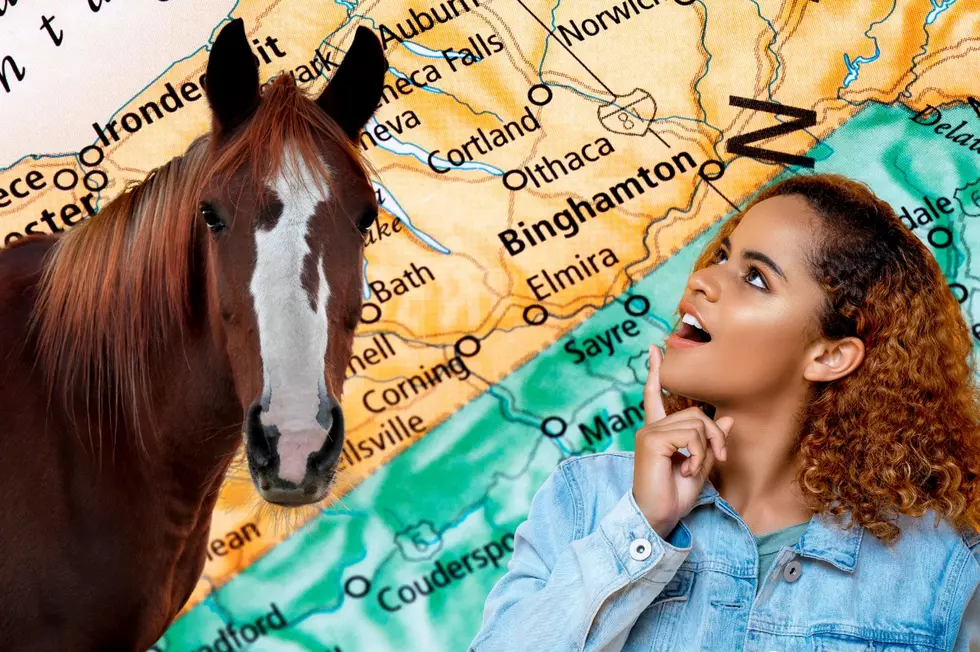
How Did the Curiously Named Horseheads, New York Get Its Name?
Horseheads, a small Upstate New York town has quite an interesting story behind its name.
The town was named after a mass burial of horses discovered here after the Sullivan-Clinton Campaign had ended. This campaign, led by General John Sullivan against the Iroquois and their British allies, had significant consequences for the area.
The Sullivan-Clinton Campaign
The Sullivan-Clinton Campaign was a large military campaign that took place in 1779, starting on the Pennsylvania frontier and pushing deep into what is now New York State. The campaign was a response to attacks on American settlements by the Iroquois and their British allies.
General George Washington commanded Sullivan to destroy the Iroquois settlements and capture as many prisoners as possible, resulting in the eradication of the Iroquois threat to settlers. Although filled with legends, half-truths, and real history, the story of the Sullivan-Clinton Campaign is fascinating, and the expedition left its mark on the area.
Was Horseheads Named For Horse Skulls?
Many say that Horseheads got its name from the bleached skulls of pack horses killed at the end of Sullivan’s Expedition. Legend has it that these skulls were arranged by the Iroquois to scare the Americans from returning, earning the area the name “The Valley of Skulls.” However, the truth behind the legend is unclear.

According to a historical account, the horses were killed at Fort Reed, just past the location of Horseheads, and their bones were later arranged along the route by the Iroquois. Some accounts support this, but it cannot be confirmed. Nevertheless, this legend adds an interesting layer to the history of Horseheads.
How Did The Horses Die?
Journals of the Military Expedition of Major General John Sullivan against the Six Nations of the Indians in 1779 provide insights into how the horses died. On Friday, September 24, the Expedition headed south from Catherine’s Town (present-day Montour Falls), headed for their provisional base at Fort Reed.
The route followed Catharine Creek through a swamp, which was a nasty experience going north, but owing to the general lack of rain that September was remarked by several officers to be easier than expected. Upon reaching Fort Reed, the men were allowed extra provisions.
On Saturday, September 25th, after a celebration, Major John Burrowes reported they had killed more of their horses, and a “definitive count” on October 6 revealed about 200 horses killed.
A Horse Memorial
The men of the Expedition memorialized the fate of the pack horses in an unusual way. On September 25, 1779, once they reached Fort Reed, the men found out that the King of Spain had declared war on England. This led to a celebratory firing of shots, including a round of 13 toasts. Interestingly, the thirteenth toast was “May the enemies of America be metamorphosed into pack horses and sent on a western expedition against the Indians.”
The celebration also marked the beginning of the End of the Expedition as most men were sent back to Fort Pitt, while the remainder were sent to winter quarters nearby.
Horseheads Becomes A Legend
Horseheads’ name comes from horse skulls, according to tradition. Although the legend cannot be confirmed, the evidence does suggest that the horses were killed at Fort Reed, and their bones were later arranged along the route by the Iroquois. Some former Sullivan Campaign soldiers among the first white settlers of the area, knew this place as “The Valley of the Horses’ Heads”.
In 1964, workmen excavating in the Lehigh Valley Railroad yards found parts of at least 100 horse skulls, adding to the myth and creating the legend for Horseheads. The story of Horseheads adds one more piece to the fascinating history of the Sullivan-Clinton Campaign.
10 Notorious Murders That Sent Shockwaves Through New York State
Gallery Credit: Traci Taylor
Your Ghost Guide to The 50 Most Haunted Places in New York State
Gallery Credit: Traci Taylor

